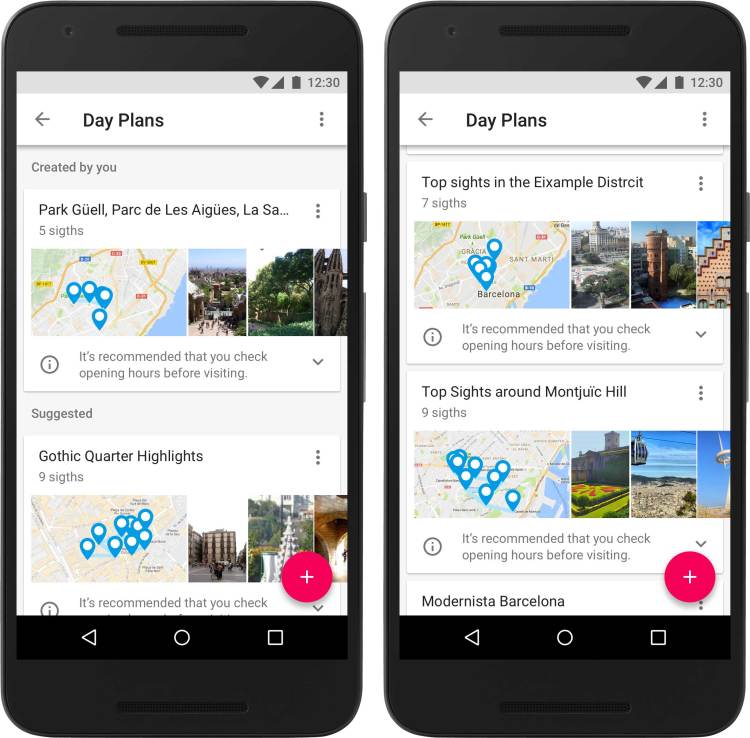The Google Trips mobile app, which Google launched yesterday, is smarter than you might realize. Behind the “Day plans” tile for the top 200 cities in the world, the app provides automatically generated itineraries full of places that you can visit in a single day. You can add and remove places from the ones it suggests, or you can refine an itinerary by restricting it to a morning or an afternoon, or even just a single day of the week. You can even do this in the app if you’re offline, assuming that you’ve downloaded the data for a given city in the app.
Google Trips is modern, but its itinerary builder relies on a mathematical concept that goes back almost 300 years. The app builds a Eulerian tour of places — that is, it makes sure you don’t keep traveling over the same pathways and seeing the same thing as you go from one destination to the next. On top of that, selecting good places for the itinerary — not just the most logistically convenient ones — is a challenge. Googlers figured out a solution to the problem, and then they found ways to make the algorithm run very quickly, so you could add in places and even sometimes see automated suggestions for additional places nearby, with very little lag.
“We felt like making a tool you could interact with that way is super important to feel right,” Google Research engineering director Andrew Tomkins told VentureBeat in an interview.
Unlike some of Google’s other recent mobile apps, like Inbox and Google Photos, Google Trips isn’t using deep learning, a trendy type of artificial intelligence that involves training artificial neural nets on lots of data and then getting them to make predictions about new data. But that doesn’t mean Google isn’t bringing to bear its extensive data stockpiles.
Google already knows where people go, where people go after that, and how long they’re at different locations. That information informs the suggestions — like how long Google thinks you’ll want to stay at a specific tourist attraction.
On top of that is — you guessed it! — a level of human review.
“We actually have a bunch of places where we’ve looked at proposed itineraries from the system very carefully,” Tomkins said. “Of course, as we’re developing these things, we start with a round of review that happens internally — places we’ve visited, places where we’ve lived and that we know very well — to make sure things are looking right. Beyond that, we do ask local experts to help us understand how we’re doing in certain areas.”
Still, Google knows its software can get better. For instance, Tomkins said, it could start providing personalized recommendations in itineraries rather than popular spots. But also, smarter analysis of available data could enhance the app.
“In a future release, we will be incorporating more detailed understanding of common crowd patterns that are nuanced by features such as time of day, preferences for certain kinds of places, restricting the itinerary to a certain travel mode such as walking tours,” Tomkins and his colleagues Bogdan Arsintescu, Sreenivas Gollapudi, Kostas Kollias, and Tamas Sarlos of Google Research wrote in a blog post.


